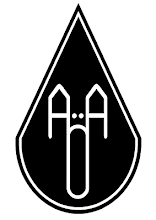
The first crucial date is the 14th century. Before the 14th century, the fashion cycle barely existed (in anything like the form it would take on in later centuries) -- the long, somewhat loose gowns that women wore had largely been derived by successive slight gradual changes from those of the Byzantine empire and late antiquity, and there was no particular expectation that a daughter would wear anything very different from what her mother had worn at the same age (unless she ended up in a very different social or geographical situation). This is not to deny that some women had their own personal sense of style, or that there were variations in women's costume. But though upper-class women might proclaim their status by wearing floor-length robes, while lower-class women's clothes were a more practical ankle or lower-calf length, the ever-changing extremes and extravagancies of later centuries didn't yet occur.

After the 14th century, these conspicuous excesses -- such as extremely high headgear, huge farthingale hoopskirts, and so on down the centuries -- were a regular feature of changing women's fashions, and it was taken for granted that women's fashions would regularly change. Near the beginning of this period, fifty years was enough to change women's costume more radically than it had changed over a number of centuries leading up to the 14th century -- and the fashion cycle got faster over time, so that by the Victorian period of the 19th century it took little more than a decade to shift from one ridiculous extreme to another (and completely different) extreme (such as from enormous crinolines to tightly-skirted dresses with bustles).

The second important date is ca. 1800. During a period from the last years of the 18th century up through the first two decades of the 19th century, the fashion cycle took a big lurch outside of its normal parameters, giving rise to "Directoire"/"Empire"/"Regency" styles. While the practicality, lightness, class-neutrality, and unburdensome and unconstricting nature of these fashions can be exaggerated, it is still true that the upper-class women's clothes of this period possessed these qualities to a much greater degree than upper-class women's styles had done for centuries (going back to at least the 1520's), and also to a much greater degree than upper-class women's styles were to do from 1825 to the end of the 19th century.

The third important date is World War I. A few years before the war, the fashion cycle appeared to be still functioning as usual (i.e. according to the same general pattern that it had been following for centuries) -- but by a few years after the end of the war, a radical and unprecedented change had occurred. Though the importance of fluctuating hemlines has sometimes been exaggerated, in this case the degree to which women's skirt lengths changed in the years surrounding WWI does give an idea of the fashion discontinuity which occurred over the course of those years (see the second chart below). During the thousand years preceding WWI, it was often true that skirts as high as lower-calf length were considered a vulgar déclassé stigma of lower-class women's dress, and it is basically true that during this millennium skirts shorter than lower-calf length were considered to be positively shameful and indecent (or were only considered appropriate in certain restricted and highly specialized contexts, such as ballerinas performing on stage, or women's sea-bathing clothes). And in 1912, society had only recently become accustomed to a change in upper-class women's gowns from floor-length to ankle-length. Yet by 1927, hemlines were creeping close to the knee, so that centuries of tradition had been thrown out the window. Similarly, a constricted waist had been a feature of most upper-class women's clothing styles since the 16th century, and had been a constant feature of fashions between 1825 and 1910 (even increasing in severity during the later part of this period, when technical advances in corset construction made tight-lacing somewhat more feasible). But by 1927, the wasp-waisted look had gone entirely out of fashion.


Therefore fashion changes and cycles since WWI have taken place according to completely separate parameters (i.e. within an entirely different range of posssible variations) than those of fashion cycles between the 14th century and WWI. This new fashion regime is shown on the diagram above by putting post-WWI fashion cycles in a different region of the chart than pre-WWI fashion cycles. Finally, a new feature of fashion which has been especially prominent since the mid-1970's is that the range of acceptable choices has become much wider - there is no longer really one single skirt-length that a woman has to wear in order to be considered stylish, and in many situations a woman is free to wear either pants or a dress, etc. etc. (See the grey area in the second chart) Another feature of this latest period is that Parisian haute couture has dwindled to become merely a kind of abstract conceptual performance art that has almost nothing whatever to do with what the vast majority of women wear on most occasions (this trend had its first early beginnings with Paul Poiret around 1909, and became rather obvious to anyone who cared enough to bother to notice after the "midi" flap of the early 1970's).
Via H.C.'s Slightly Silly Victorian and pre-Regency Page








Nice post love reading it
AntwortenLöschenWomens blazer jacket
Womens Leather Biker Jacket
Women Leather Jacket
leather skirt
Doris Michaels Cosmetics Online - Doris Michaels Lipstick contain a rich & creamy formula with strong colors for longer wear. Enriched with vitamins and moisturizers to protect and condition your lips, no need for lip balm.
AntwortenLöschen